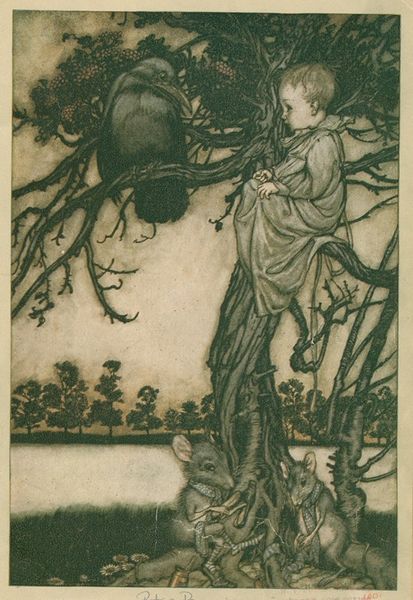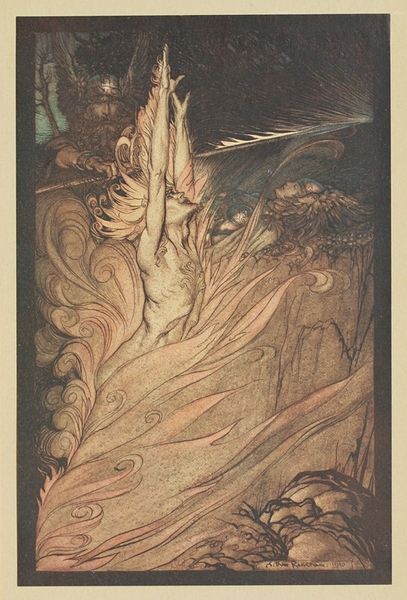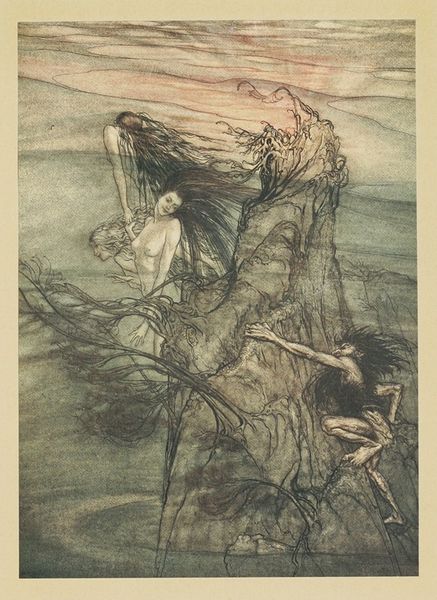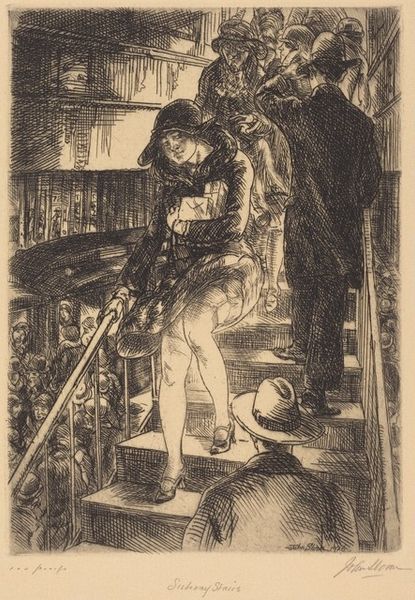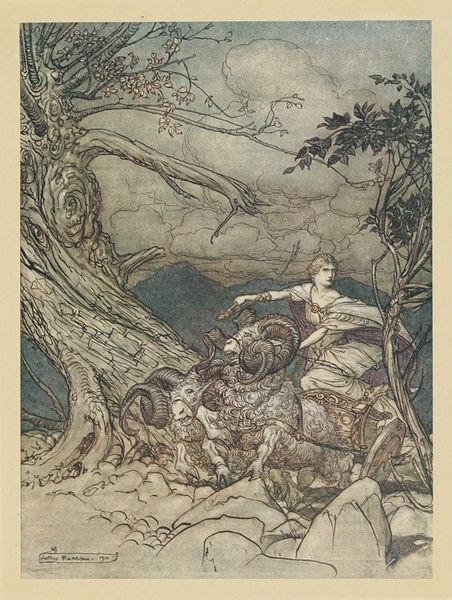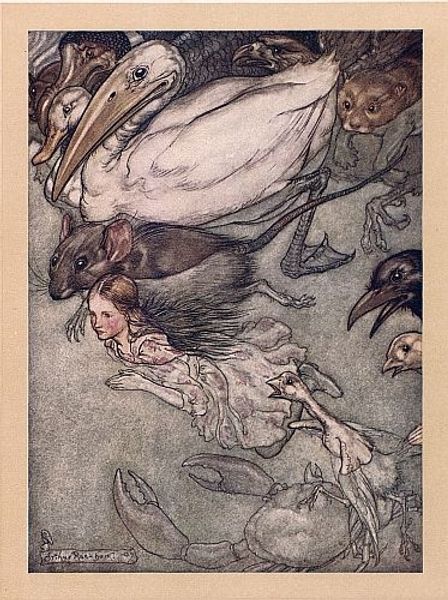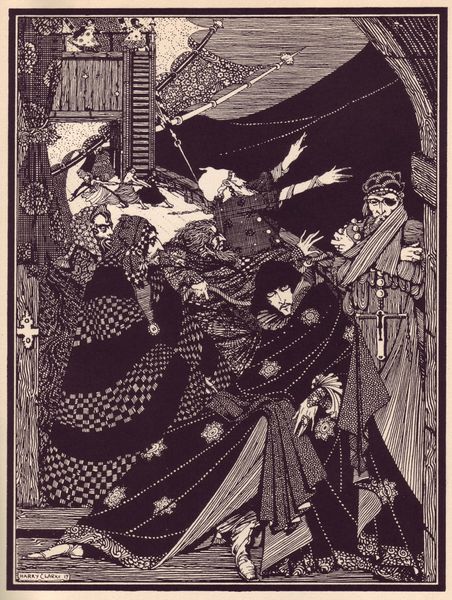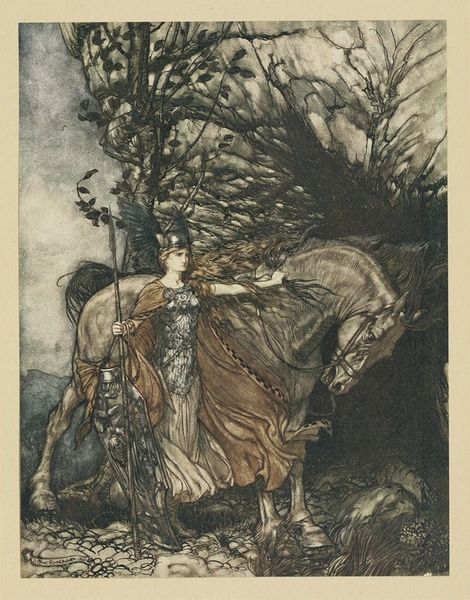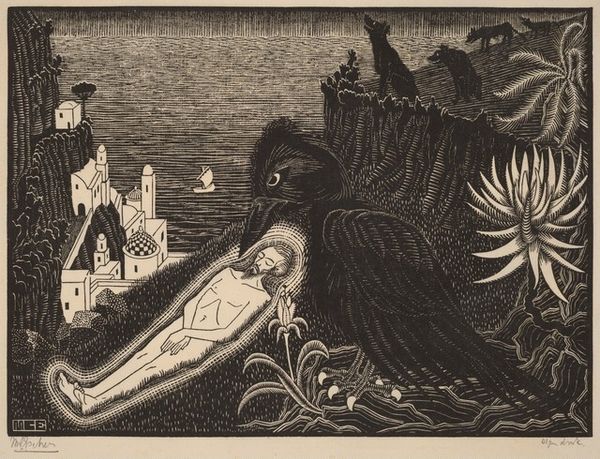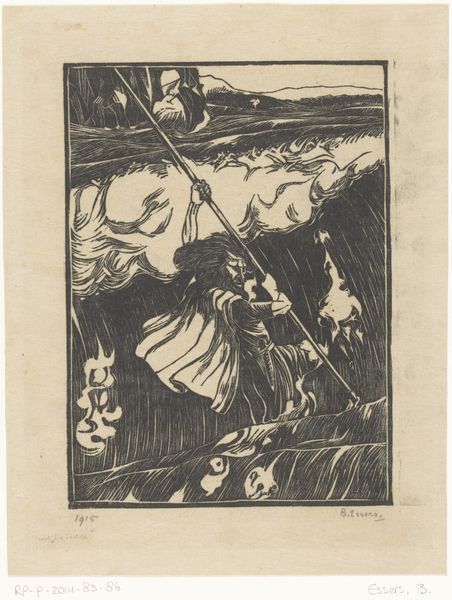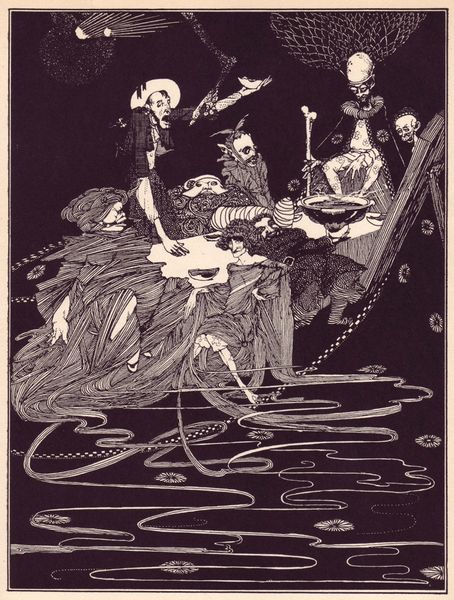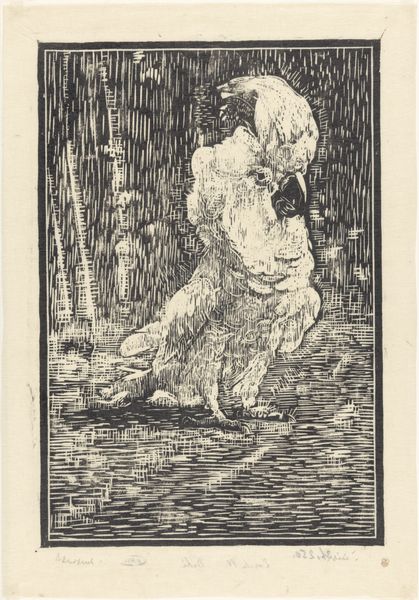
drawing, paper, ink
#
drawing
#
arts-&-crafts-movement
#
landscape
#
fantasy-art
#
figuration
#
paper
#
ink
#
line
#
symbolism
#
watercolour illustration
Copyright: Public Domain: Artvee
Curator: Let's turn our attention to Arthur Rackham's 1913 drawing, "The Kensington Gardens are in London, where the King lives," a piece rendered in ink on paper. What are your immediate impressions? Editor: Well, it immediately strikes me as a study in contrasts: the rigid formality of the suited gentleman set against the wild, almost grotesque nature of the tree and its fairy inhabitants. The linear precision of the drawing style is also notable. Curator: Absolutely. Rackham, firmly within the Arts and Crafts movement, often explored themes of childhood, nature, and the fantastical as a way to critique the increasingly industrialized world. This image, like much of his work, can be read as a commentary on the separation, the almost militant fencing-off, of the natural and imaginative realms from the ordered, societal structures represented by the man in the top hat. Editor: I see what you mean. The composition definitely reinforces that division. The linear fence visually segments the picture plane. And look at the texture – the rough, organic textures of the tree versus the smooth, controlled lines that define the figure of the man. Curator: The fairies themselves present a complex narrative. They are simultaneously whimsical and, as you noted, almost grotesque. Are they a celebration of childhood innocence or a darker reflection of repressed desires? The positioning of them at the bottom almost literally suggests the 'underworld', perhaps the unconscious? It invites a psychoanalytical reading through a contemporary theoretical framework. Editor: That's interesting. I'm drawn to the symbolism inherent in the tree itself. It dominates the composition; the gnarly branches and the expressive face etched into the trunk suggesting ancient wisdom and perhaps, a silent observation of the unfolding human drama beyond the fence. The roots seem to simultaneously protect and contain the fairy folk. Curator: Indeed, that sense of containment is critical. Rackham uses the setting, the famed Kensington Gardens themselves, as a potent symbol of a tamed wilderness, reflecting broader societal efforts to categorize, control, and even exploit both nature and the imagination. Editor: And there’s that salute the man gives. Who is it for, really? The King? Or is it a final farewell to this world he barely acknowledges? It speaks of rigid structure and an obedience which could represent either dedication to tradition or forced social structure. Curator: It is left to us as viewers to reflect on which he truly serves. Rackham’s detailed drawing gives a lens into early twentieth-century critiques about burgeoning structures that can feel quite salient still. Editor: An uncanny illustration that continues to pose significant questions even today through its sharp linework, contrasting elements, and carefully built symbolism. Curator: Agreed, it provokes us to challenge established barriers, consider the unseen, and the politics within, and even what gets left to legend.
Comments
No comments
Be the first to comment and join the conversation on the ultimate creative platform.
